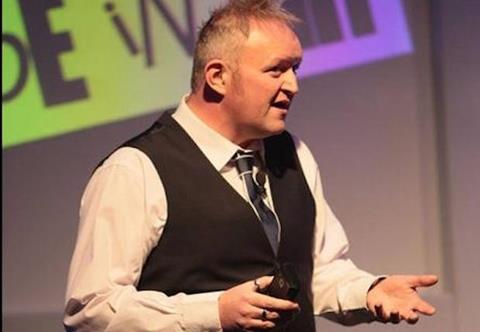
Employee Benefits Connect 2016: Reward and benefit strategies will need to adapt to the changing workplace landscape if they are to meet the evolving requirements of the future workforce.
Speaking in the closing keynote session titled ‘What is the digital future of the workplace and how different will it be?’ at Employee Benefits Connect on 9 March, Perry Timms, director, people and learning at Medio Zoo, adviser to the Chartered Institute of Personnel and Development on social media, and founder of People and Transformational HR, explained what future innovations are likely to impact work and employees’ expectations. These range from the development of advanced robotics and artificial intelligence to the growth of alternative currencies and the gig economy. Other phenomena include the convergence of biology and technology for human augmentation, the development of synthetic beings to carry out work deemed unpleasant or dangerous, and how access to information uploads could allow people to think differently as the time and brain power required to recall information is reduced.
Timms (pictured), said: “There’s something about how quickly these sorts of things are coming and taking over that means we need to pay heed to them.”
Employees’ demands and expectations are also evolving, moving away from traditional concepts such as control, management and key performance indicators (KPIs), towards their own sense of value of the work that they perform. However, Timms does not believe these changing attitudes can only be found among younger generations.
He said: “I don’t believe that generation Y is radically different from generation X. I think what’s happening is that [generation Y employees] are entering the workforce as the workplace is changing and as a result they have different views on things, and are connected and have operated in a slightly different way.”
The tools that futurologists use can help employers to consider how the workplace will look in the future and how benefits approaches could adapt to embrace these changes. The primary tools include the analysis of data, examining the past and historical cycles, modelling scenarios, and searching for asymmetries.
Timms said: “There’s a huge amount of predictive data out there now. We’ve got an enormous amount of data we can tap into about demographic shifts, about economic trends, about all sorts of areas, such as where people are spending their time and their habits. So we can use data to predict the future.
“Asymmetries is the interesting concept that the future is already here, it’s just not in one place. Futurologists who know where to look know that there are already places pushing the boundaries and developing and delivering a future proposition,” he added.
During the session, Timms set out his theory of the future of the work landscape. This includes seven elements: the digitalisation and socialisation of work; the decline of the job; the demise of the manager; the death of the hierarchy; the democratisation of learning; the disruption of the usual; the demand for craft.
“HR needs to get itself fit for a digital age,” said Timms.
This means looking beyond monetary rewards. He said: “You need to think about reward in an anthropological sense; how are we as human beings constructed and what can the reward industry do that gets into things like health and wellbeing, mental health and education.”
He added: “Be as imaginative as possible with rewards. Be a reward explorer – look at what other people are doing.”











![PizzaExpress_Chief-People-Officer_Inji-Duducu[53]](https://d1m12snq5oxhll.cloudfront.net/Pictures/100x67/6/0/0/108600_pizzaexpress_chiefpeopleofficer_injiduducu53_337065.jpg)